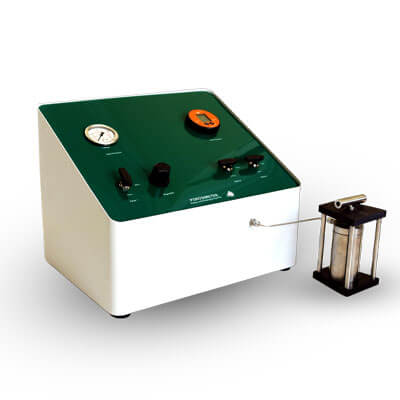Introduction
The helium gas expansion porosimeter is a precise and cost-effective instrument designed to measure the porosity of core samples. Using the principles of Boyle’s Law and Charles’s Law, the device determines both grain volume and pore volume through isothermal helium expansion. This enables the accurate calculation of total porosity and grain density.
Designed for simplicity and efficiency, this compact system is ideal for educational and research environments, making it an excellent choice for universities, laboratories, and training centers.
Technical Specifications
Core diameter: 1" and 1.5"
Maximum core length: up to 3 inches
Porosity measurement range: up to 60%
Initial charge pressure: up to 200 psi
Required gas pressure (Helium or Nitrogen): 500 psi
Pressure sensor accuracy: 0.1% full scale
Operating temperature: Ambient conditions
Key Benefits
-
High accuracy in porosity measurement with 0.1% pressure sensor precision
-
User-friendly operation with an Excel-based template for automatic calculations
-
Cost-effective solution tailored for educational use
-
Compact and portable design, perfect for limited lab spaces
-
Compatible with helium or nitrogen gas, depending on user preference
Applications
The porosity measurement device is a valuable tool in a range of geoscience and engineering fields, including:
-
Petroleum engineering: Evaluating reservoir properties and optimizing drilling zones
-
Geology and petrology: Studying rock structures and their porosity characteristics
-
Research laboratories: Supporting academic projects and scientific experiments
-
Educational environments: Teaching porosity, density, and rock analysis fundamentals to students
How It Works
The device operates by injecting helium gas into a reference volume, allowing it to expand into a chamber containing the core sample. By analyzing the pressure changes and applying Boyle’s and Charles’s Laws under controlled temperature conditions, the instrument calculates the grain volume and pore volume of the rock. From these values, porosity and grain density are derived.
The process is simple: insert the core into the chamber, record the pressure readings, and input the data into the provided Excel template to obtain the final results quickly and accurately.


